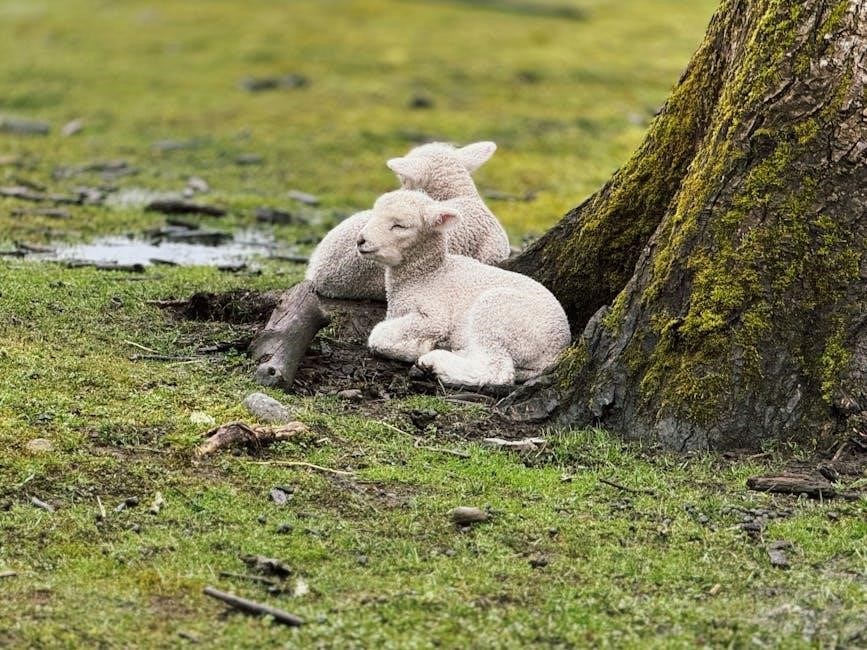Life of Pi: An Exploration of Survival, Faith, and Storytelling
Yann Martel’s Life of Pi is a captivating adventure that delves into the profound depths of human endurance. It seamlessly blends elements of faith and the power of storytelling. This philosophical novel explores spirituality, challenging our perceptions of reality through Pi’s extraordinary journey.
Yann Martel’s Life of Pi, a philosophical novel published in 2001, invites readers into a world where adventure, spirituality, and the very nature of belief intertwine. The narrative begins with a fictional author encountering Francis Adirubasamy, who recounts the incredible story of Piscine Molitor “Pi” Patel. The author then seeks out Pi in Canada, where he meticulously documents Pi’s extraordinary experiences, occasionally interjecting with his own observations from their interviews.
The novel masterfully blends realism with elements of magical realism, blurring the lines between what is and what could be. Pi’s journey is not merely a tale of survival; it is an exploration of faith, hope, and the power of storytelling to shape our understanding of the world. Martel’s work transcends the boundaries of a simple adventure, prompting readers to question their own beliefs and the narratives they construct to make sense of life’s challenges. Life of Pi remains a compelling and thought-provoking exploration of the human spirit.
Pi Patel: Character Overview and Development
Piscine Molitor Patel, known as Pi, is the central figure in Yann Martel’s Life of Pi, a character whose journey embodies resilience, faith, and the power of narrative. From his early years in Pondicherry, India, Pi demonstrates a profound curiosity and an openness to diverse spiritual paths. He embraces Hinduism, Christianity, and Islam, finding elements of divine truth in each. This early exploration of faith forms the bedrock of his character, influencing his actions and perceptions throughout the novel.
Pi’s development is profoundly shaped by the traumatic experience of a shipwreck, which thrusts him into an unimaginable struggle for survival. Adrift in the Pacific Ocean with a Bengal tiger named Richard Parker, Pi is forced to confront his physical and mental limits. His resourcefulness, ingenuity, and unwavering belief in a higher power sustain him through months of hardship. He evolves from a curious boy into a resourceful and resilient young man, forever marked by his extraordinary experience. Pi’s journey is a testament to the human capacity for adaptation and the enduring power of hope.
The Shipwreck and the Struggle for Survival
The catastrophic shipwreck that befalls the Patel family marks a pivotal turning point in Life of Pi, plunging Pi into a desperate fight for survival. Amidst the chaos and devastation, Pi finds himself adrift in a lifeboat, his only companions a hyena, an orangutan, a zebra, and, most significantly, a Bengal tiger named Richard Parker. The initial struggle involves navigating the immediate dangers of the sea, securing food and water, and establishing a fragile sense of order within the confines of the small vessel.
As days turn into weeks, and weeks into months, Pi’s survival hinges on his ability to adapt to the harsh realities of his situation. He develops ingenious methods for catching fish, collecting rainwater, and protecting himself from the elements. The constant threat posed by Richard Parker forces Pi to develop a complex strategy of dominance and coexistence, a delicate balance between fear and control; This extraordinary struggle tests Pi’s physical and mental endurance, pushing him to the very limits of human survival, and revealing the depths of his resilience.

Richard Parker: The Bengal Tiger as a Symbolic Figure
Richard Parker, the Bengal tiger sharing Pi’s lifeboat, transcends the literal to become a potent symbolic figure within Yann Martel’s Life of Pi. He embodies the primal instincts and untamed aspects of human nature, representing the raw will to survive that resides within Pi himself. Richard Parker is the embodiment of Pi’s fear, aggression, and the darker impulses necessary for enduring the unimaginable hardships of his ordeal.
The tiger’s presence forces Pi to confront his own inner savagery, driving him to acts he might never have contemplated under normal circumstances. Their complex relationship is a constant power struggle, a dance between civilization and instinct. Richard Parker also symbolizes the “other,” the part of ourselves we often try to suppress or deny, yet which ultimately contributes to our wholeness. He is a constant reminder of the precariousness of life and the ever-present potential for violence and survival that resides within us all, blurring the lines between man and beast, reality and imagination.

Themes of Faith and Spirituality in Pi’s Journey
Yann Martel’s Life of Pi intricately explores the profound themes of faith and spirituality through the extraordinary journey of Piscine “Pi” Patel. From a young age, Pi embraces a multi-faceted approach to religion, finding solace and truth in Hinduism, Christianity, and Islam. This diverse spiritual foundation becomes his anchor amidst the chaos and despair of his survival at sea.
Pi’s unwavering faith is not merely a passive belief system; it is an active force that sustains him physically and emotionally. Through prayer, meditation, and ritual, he maintains a connection to something larger than himself, offering him hope and purpose in the face of overwhelming odds. His journey highlights the transformative power of faith, demonstrating how it can provide meaning, resilience, and a sense of belonging even in the most desolate circumstances. Ultimately, Life of Pi suggests that faith, in its various forms, is essential for navigating life’s inevitable trials and tribulations.
The Significance of Storytelling and Narrative
In Yann Martel’s Life of Pi, storytelling transcends mere entertainment, becoming a vital tool for survival, understanding, and the construction of meaning. The narrative itself is framed as a story within a story, emphasizing the power of accounts to shape our perceptions of reality. Pi’s fantastical tale of survival with Richard Parker is not just a recounting of events but a carefully crafted narrative designed to convey deeper truths about faith, hope, and the human condition.
The novel highlights how stories can provide solace and order in the face of chaos. By transforming traumatic experiences into a coherent narrative, Pi gains a sense of control and agency over his circumstances. Furthermore, Life of Pi explores the subjective nature of truth, suggesting that the “better story” is not necessarily the most accurate but the one that offers greater meaning and comfort. Ultimately, storytelling becomes a powerful act of self-preservation and a testament to the enduring human need for narrative.
Magical Realism and the Blurring of Reality
Life of Pi masterfully employs magical realism to create a narrative where the boundaries between the real and the fantastical become deliberately blurred. This literary technique allows Yann Martel to explore profound themes of faith, survival, and the power of imagination. The inclusion of extraordinary elements, such as Pi’s extended voyage with a Bengal tiger, challenges the reader’s expectations of realism and invites them to consider alternative interpretations of events.
Through magical realism, the novel suggests that reality itself is subjective and open to interpretation. Pi’s fantastical story can be seen as a metaphor for the human capacity to create meaning in the face of adversity. The blurring of reality also raises questions about the nature of truth and the role of belief in shaping our understanding of the world. Ultimately, Life of Pi uses magical realism to invite readers to embrace the power of imagination and to consider the possibility that there is more to reality than meets the eye. It encourages us to find wonder in the everyday and to recognize the potential for the extraordinary within the ordinary.
The Ocean Setting: Transformation and Gruesome Acts
The vast and unforgiving ocean in Life of Pi serves as a crucible, transforming Pi both physically and psychologically. Isolated and adrift, he confronts the raw realities of survival, witnessing and participating in gruesome acts that strip away his innocence. The ocean, in its immensity, mirrors the boundless capacity for both beauty and brutality within the natural world and within humanity itself. This harsh environment forces Pi to adapt, pushing him to the limits of his endurance and challenging his moral boundaries.
The gruesome acts witnessed and committed are not gratuitous; they serve to highlight the desperate circumstances and the primal instincts that emerge when survival is at stake. The ocean setting amplifies these acts, underscoring the isolation and the lack of societal constraints. Furthermore, the transformation Pi undergoes is not solely a descent into barbarity. It is also a testament to his resilience and his unwavering will to live. The ocean, therefore, becomes a canvas upon which Pi’s struggle for survival and his ultimate transformation are painted in vivid and often disturbing detail. The setting is a catalyst for a profound exploration of human nature.
Analysis of Part 2: Quotes and Plot

Part 2 of Life of Pi plunges into the heart of Pi’s survival story, detailing his harrowing journey in the lifeboat. Key quotes reveal his mental and physical struggles, showcasing his unwavering determination amidst unimaginable adversity. The plot unfolds as a series of challenges: battling starvation, thirst, and the constant threat of Richard Parker, the Bengal tiger. These trials are punctuated by moments of profound introspection, as Pi grapples with his faith and the very meaning of existence.
Analyzing specific quotes from this section provides insight into Pi’s evolving character. His interactions with Richard Parker, initially fraught with terror, gradually transform into a complex relationship of mutual dependence. The plot is not merely a linear account of survival; it is a carefully constructed narrative that blurs the lines between reality and imagination. Furthermore, the quotes and plot elements in Part 2 work together to create a powerful and emotionally resonant depiction of human resilience. This section leaves us questioning the nature of truth and the power of belief in the face of overwhelming odds, creating a lasting impact on the reader.

The Two Stories: Examining Truth and Belief
Life of Pi culminates in a profound exploration of truth and belief through the presentation of two distinct narratives. The first, a fantastical tale of survival with a menagerie of animals, captivates the imagination and resonates with themes of faith and resilience. The second, a stark and brutal account involving human survivors, strips away the fantastical elements, revealing a grim reality. The choice between these stories lies with the reader, forcing a confrontation with the subjective nature of truth.
Martel masterfully uses these contrasting narratives to question how we construct meaning and cope with trauma. The fantastical story, while seemingly improbable, offers solace and a framework for understanding the incomprehensible. The brutal truth, though potentially more accurate, is psychologically devastating. Ultimately, the novel suggests that the “better story” – the one that provides hope, meaning, and a reason to believe – may be the more valuable truth, regardless of its factual accuracy. This examination challenges the reader to consider the power of narrative in shaping our perceptions and sustaining our spirits in the face of adversity, prompting a deeper reflection on the nature of belief itself.
Life of Pi leaves the reader contemplating the very essence of existence, prompting a search for meaning and purpose in a world often fraught with suffering and uncertainty. Pi’s journey, a harrowing tale of survival against seemingly insurmountable odds, serves as a powerful metaphor for the human condition. His unwavering faith, resilience in the face of despair, and ability to find beauty even amidst the grotesque, offer a compelling roadmap for navigating life’s challenges.
The novel suggests that meaning is not inherent but rather constructed through the stories we tell ourselves and the beliefs we choose to embrace. Whether one accepts the fantastical narrative or the brutal reality, the underlying message remains the same: life is a precious gift, and it is up to each individual to find their own reason for living. Through faith, hope, and the power of imagination, we can transcend the limitations of our circumstances and discover a sense of purpose that sustains us even in the darkest of times. Life of Pi ultimately encourages us to embrace the unknown, to seek out the extraordinary in the ordinary, and to find meaning in the connections we forge with ourselves, with others, and with the world around us.


